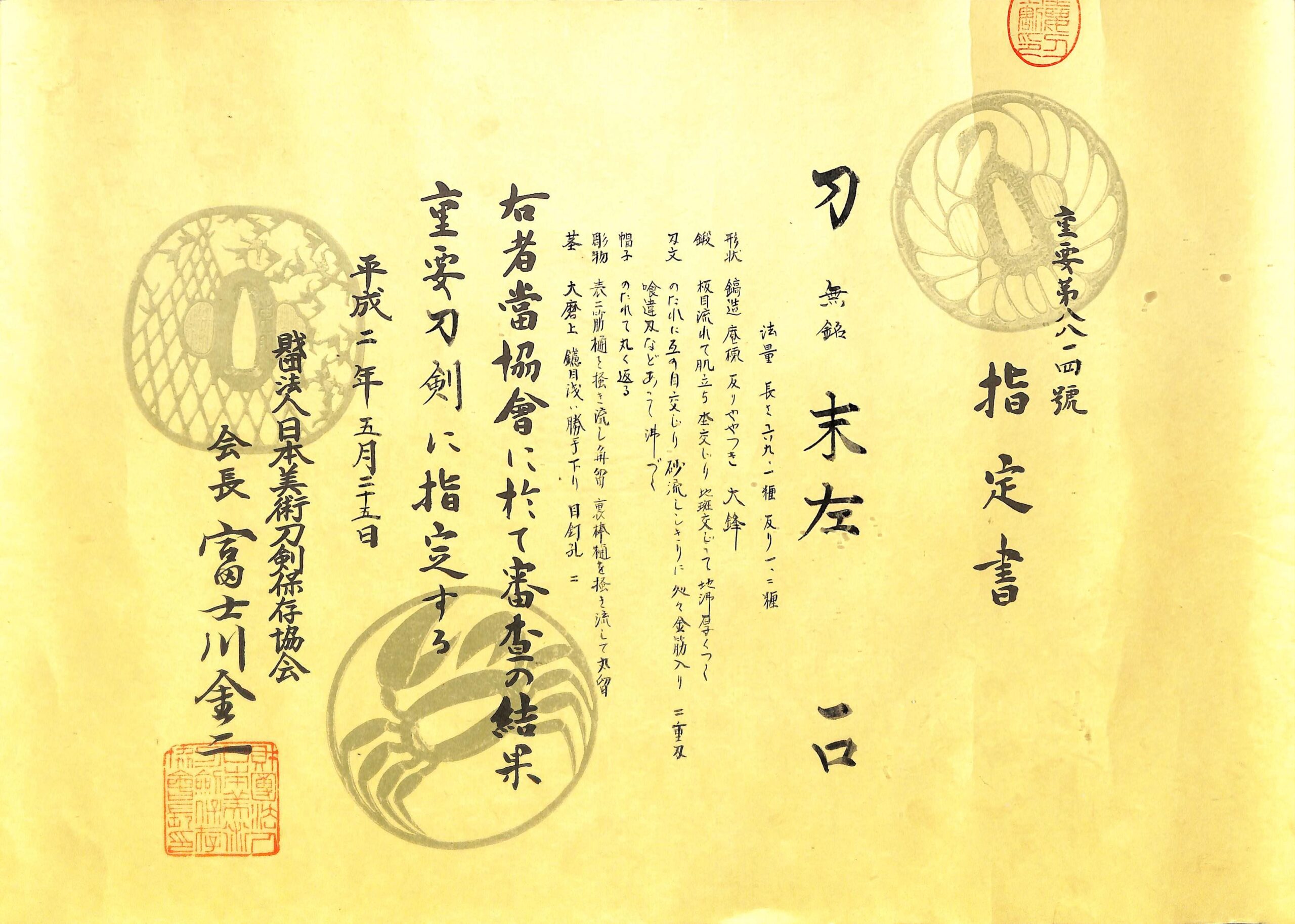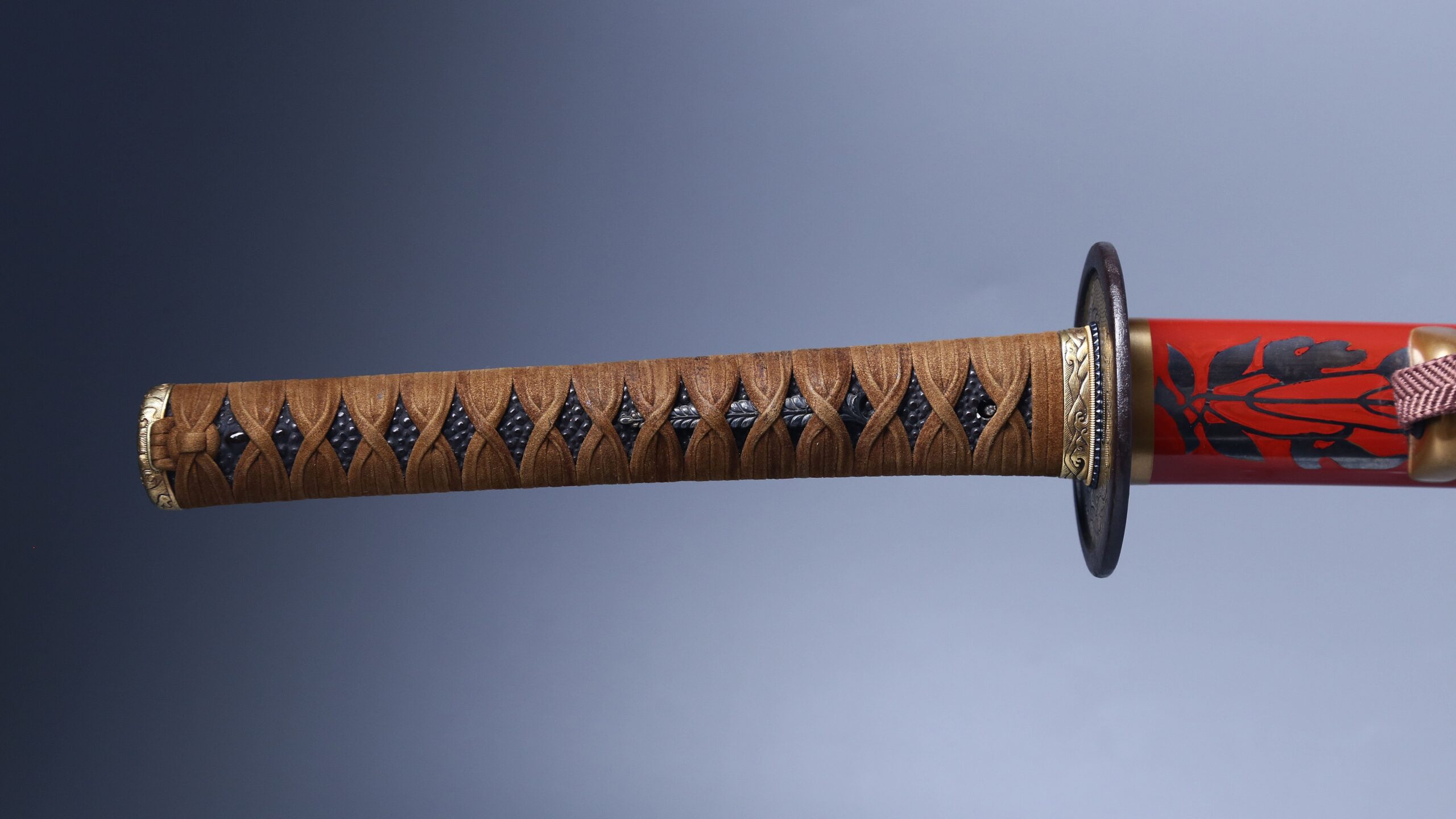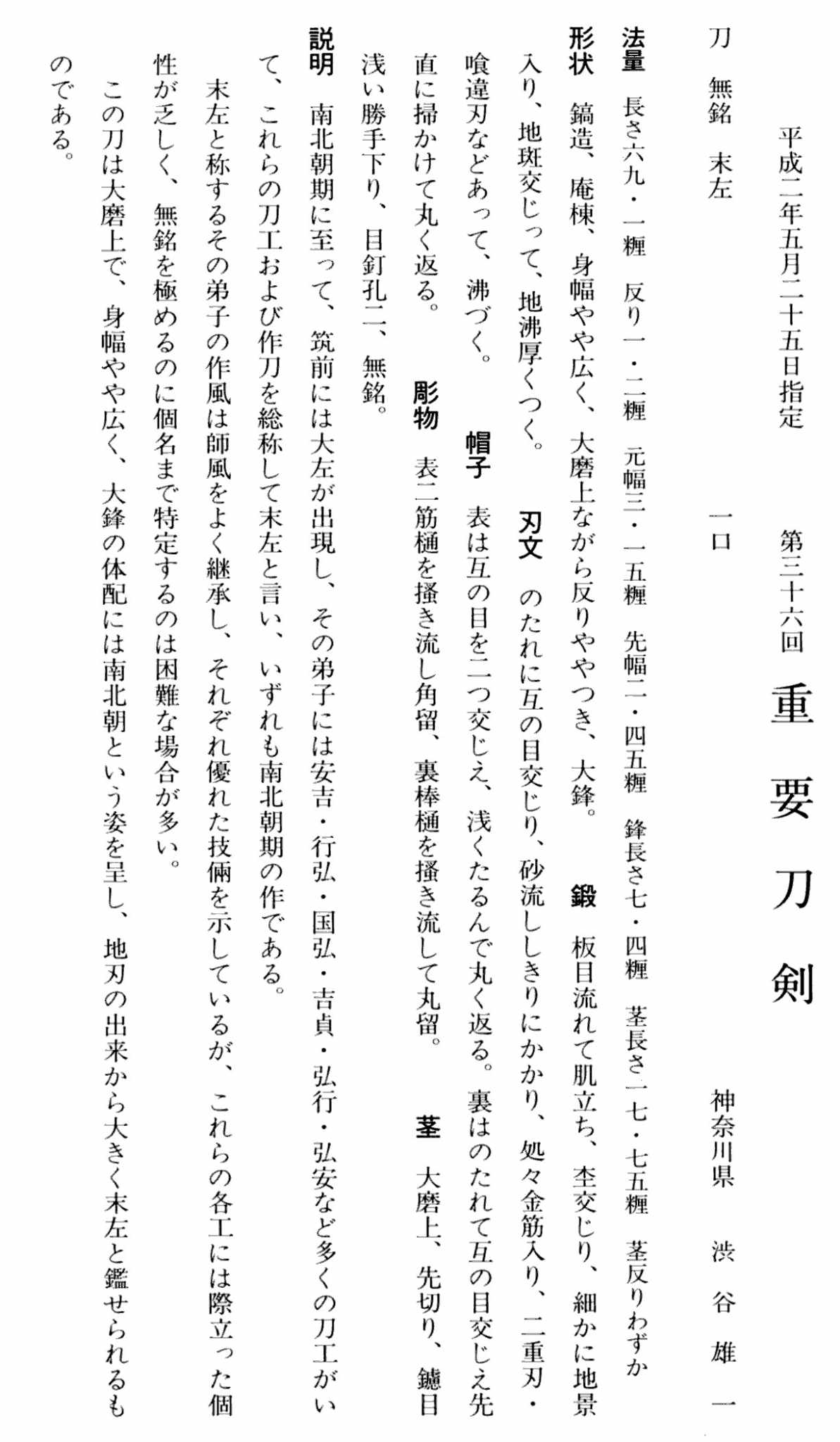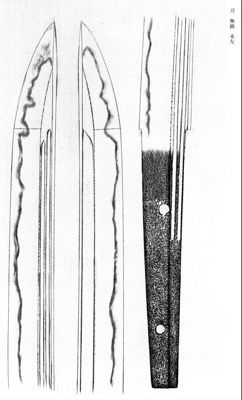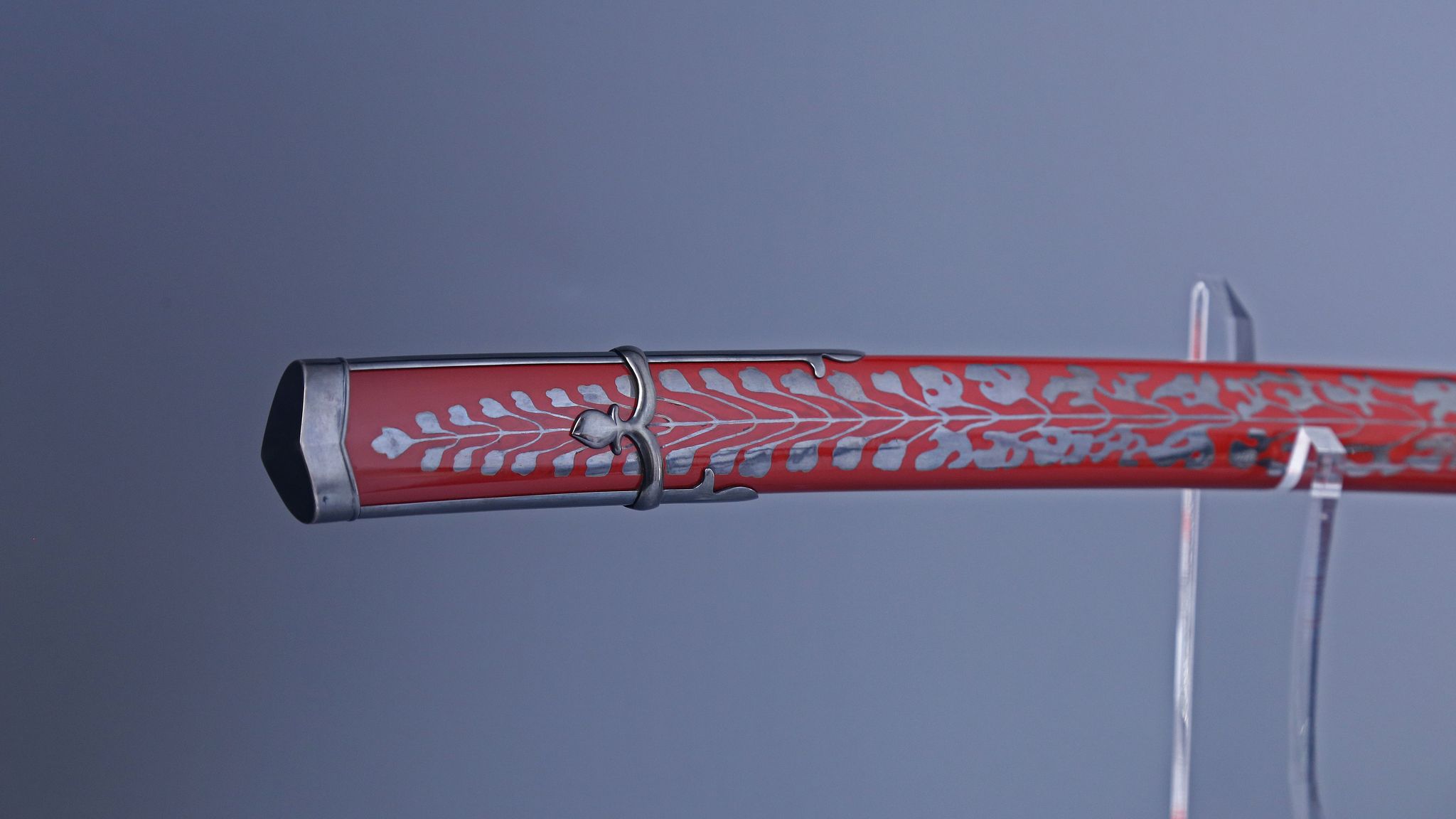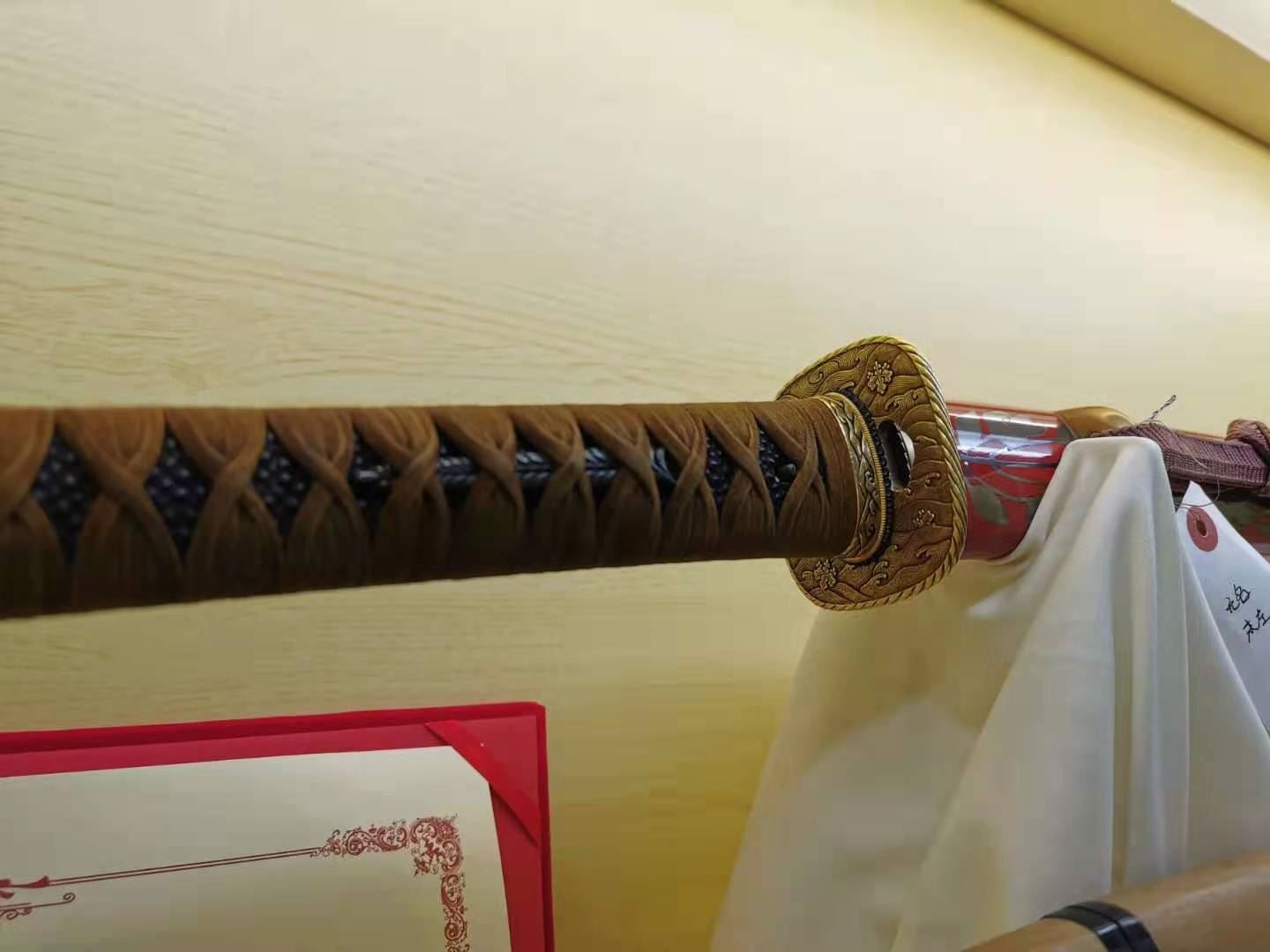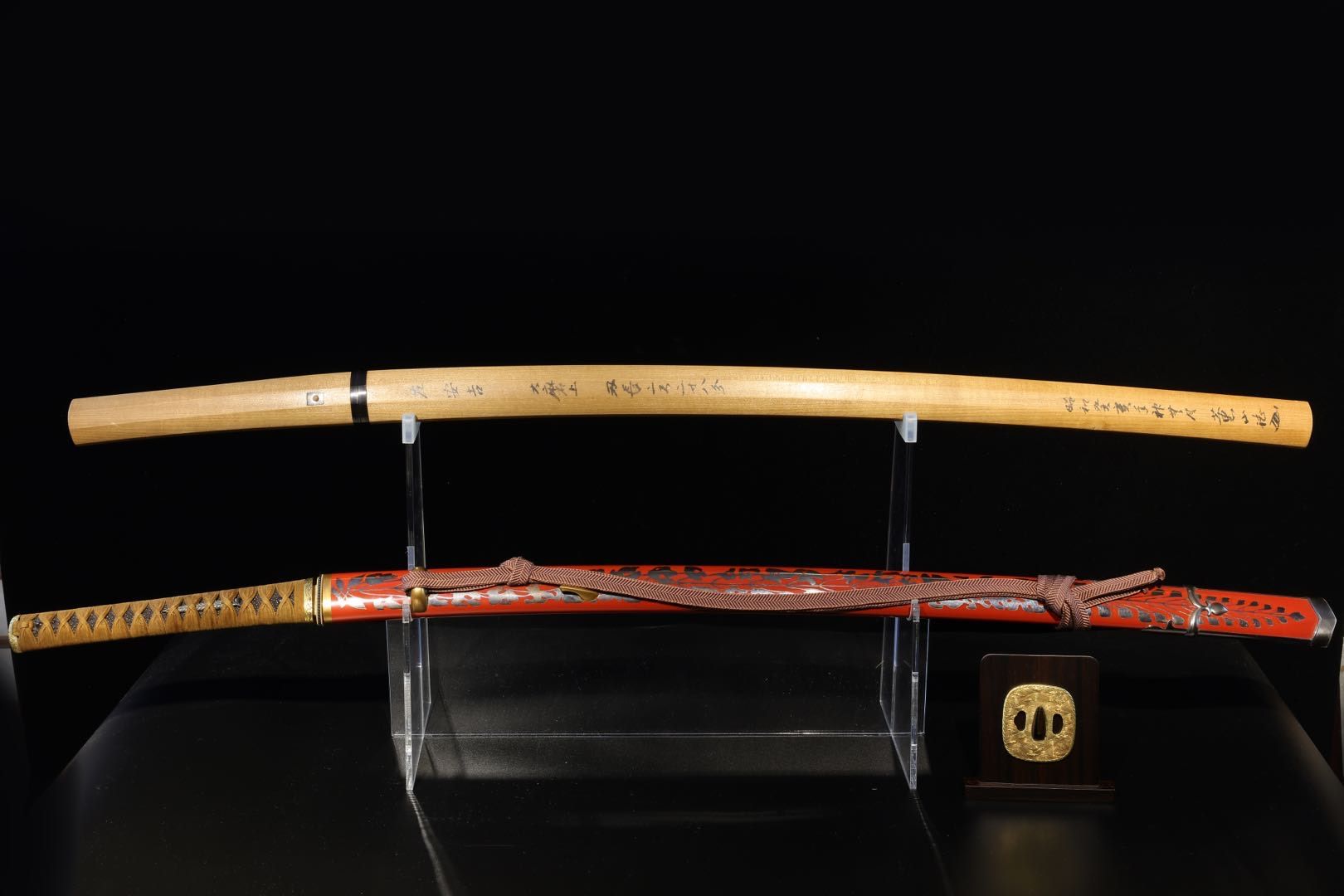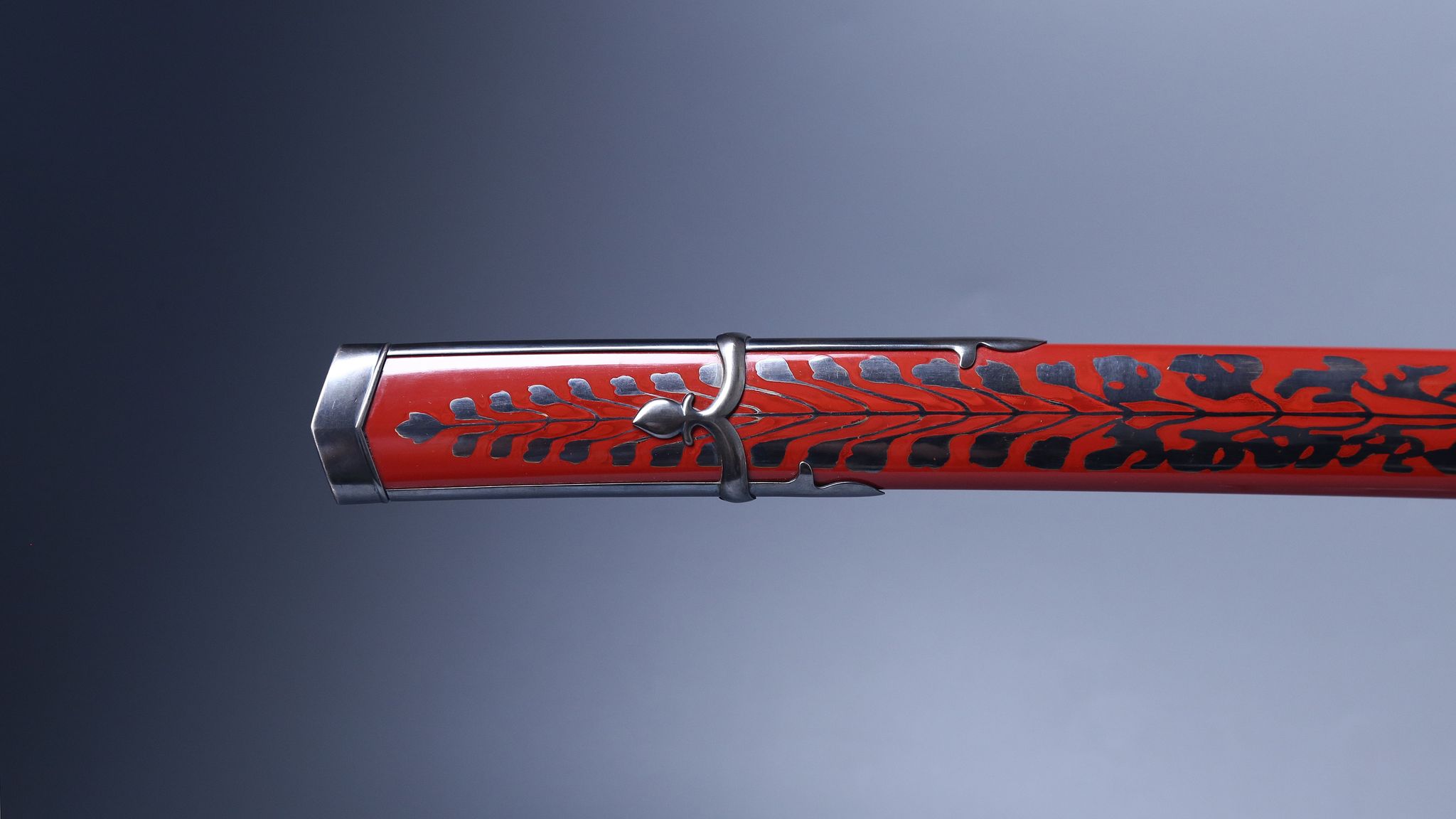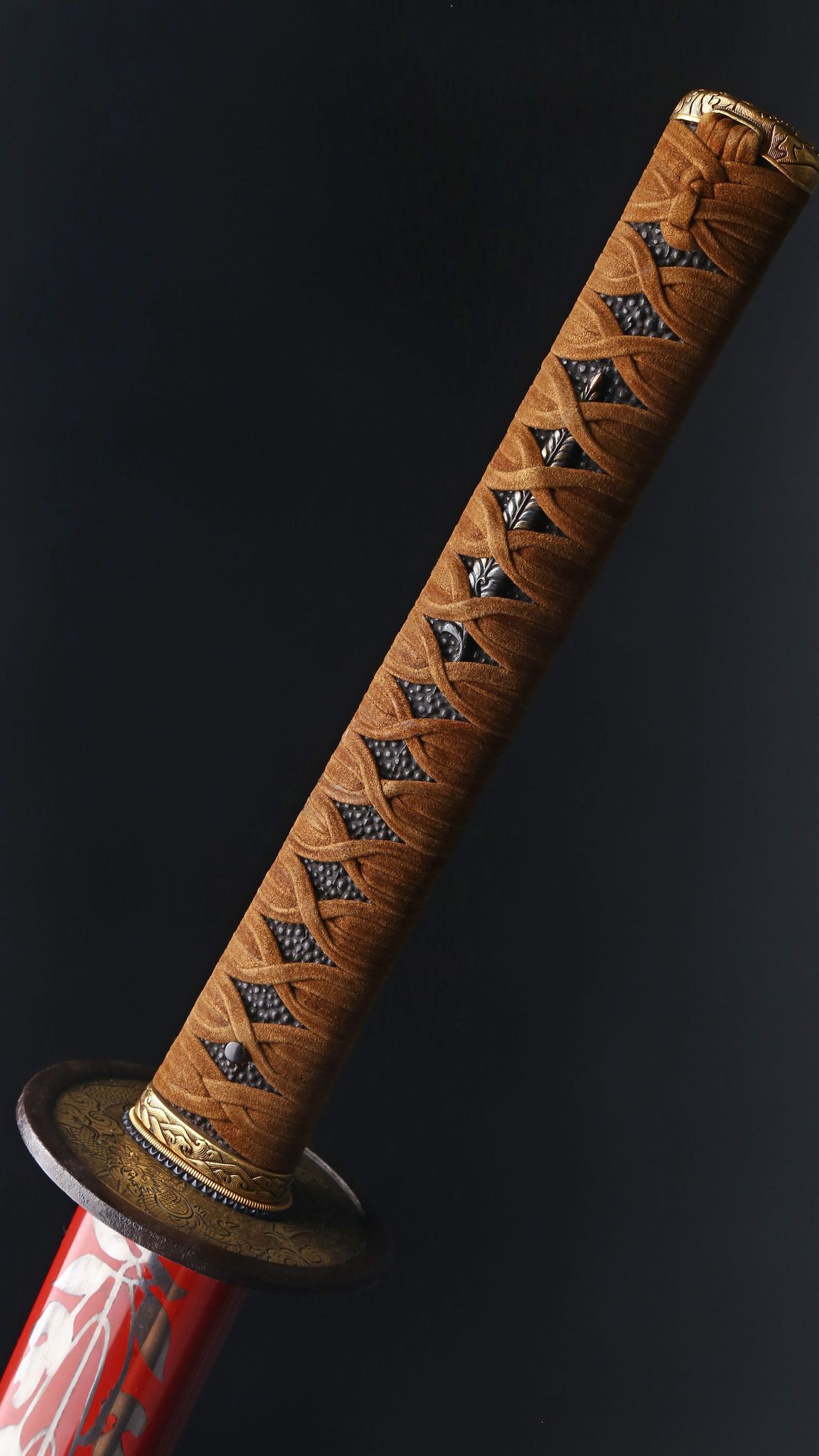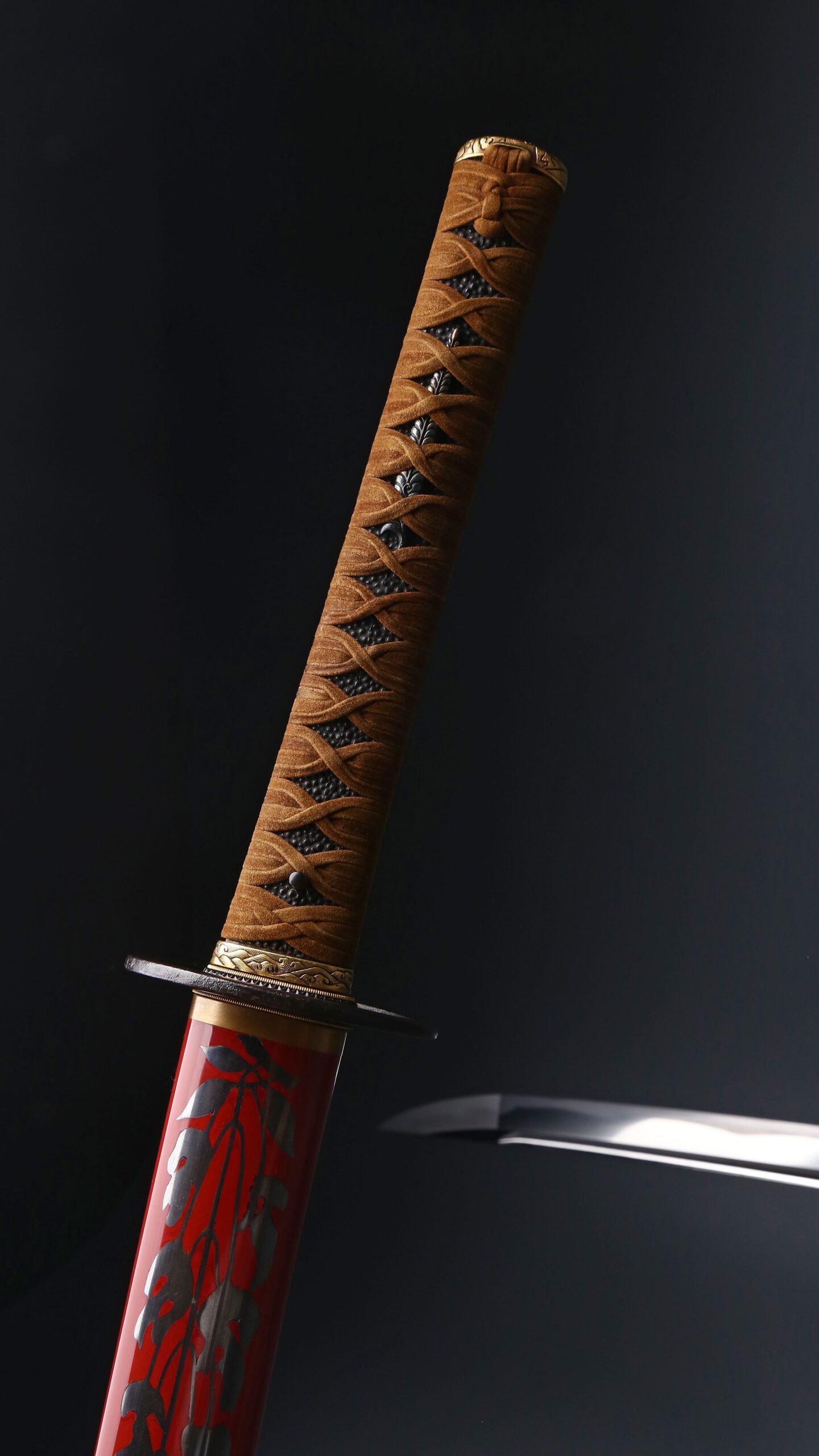Description
第三⼗六回重要⼑剣
筑州住末左
⼤磨上無銘也末左トハ⼤左⼀⾨ノ技倆秀抜ナル鍛冶達ヲ汎称スル⾔葉也幅廣・⼤鋒ノ豪快雄渾 フル形態ナリテ地刃厚ク沸付キテ砂流・⾦筋・地景ヲ織成シ相州傳ヲ強調シタル出来⼝ヲ⽰シ 帽⼦ガ突上気味トナルナド⼀類ノ特⾊ガ把握サレル優品⽽穏ヤカナ刃取カラ貞吉ニ擬セラレル者有之
刃⻑弐尺⼆⼨⼋分弱
歳甲⾠如⽉探⼭識「花押」
Dai sanjūrokkai Jūyō-Tōken
Chikush-jū Sue-Sa
Ō-suriage mumei nari. Sue-Sa to wa Ō-Sa ichimon no giryō shūbatsu naru kaji-dachi o hanshō-suru kotoba nari. Haba hiro, ō-kissaki no gōkai-yūkon-furu keitai narite jiba atsuku nie tsukite sunagashi, kinsuji, chikei o orinashi Sōshū-den o kyōchō-shitaru dekiguchi o shimeshi bōshi tsukiage kimi to naru nado ichirui no tokushoku ga ha’aku-sareru yūhin. Shikamo odayaka na hadori kara Sadayoshi to gi-serareru mono kore ari.
Hachō ni-shaku ni-sun hachi-bu jaku
Toki ni kinoe-tatsu kisarari Tanzan shirusu + kaō
Jūyō-Tōken at 36th Jūyō Shinsa
Sue-Sa from Chikuzen Province
This blade is ō-suriage mumei. “Sue-Sa” is an umbrella term for the group of outstanding smiths that belonged to the school of Ō-Sa. With its wide mihaba and ō-kissaki, the blade is of a magnificent and powerful shape. The jiba displays much nie, and the interpretation with sunagashi, kinsuji, and chikei being interwoven with the forging structure reflects a strong emphasis of the Sōshū tradition. This combined with the bōshi with its late starting kaeri, we recognize in this masterwork the typical characteristics of said group, and because of the calm course of the ha, it may be narrowed down to Sadayoshi as its maker.
Blade length ~ 69.0 cm (27 3/16 in.)
Written by [Tanobe Michihiro] in February in the year of the dragon of this era (2024) + monogram.

